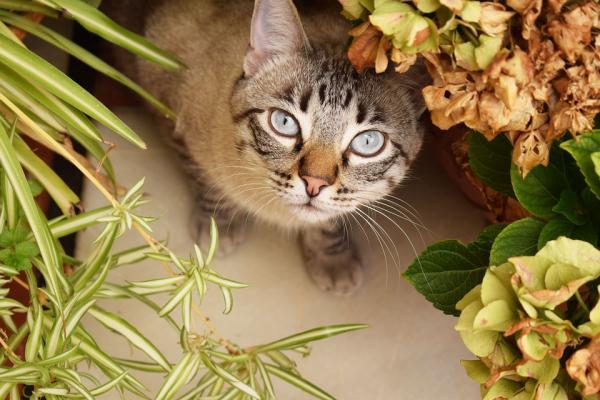Polycystic kidney in cats – Symptoms and treatment

One of the most amazing features of felines is their great flexibility and agility, hence the popular saying that gives these 7 pets lives, although nothing is further from reality, the cat is an animal very susceptible to many diseases and many of them, such as polycystic kidney disease, can also be observed in humans.
This disease can be asymptomatic until it has advanced enough to pose an important risk to the life of the animal, so it is of great importance that the owners know more about this pathological situation, in order to diagnose and treat it as soon as possible. .
In this article we talk about the Symptoms and treatment of polycystic kidney in cats.
What is the polycystic kidney?
Polycystic kidney disease or polycystic kidney, is a hereditary disease very common in Persian and exotic cats with short hair.
The main characteristic of this disorder is that the kidney produces cysts full of fluids, these are present from birth, but as the puppy cat grows, the cysts also increase in size, even damaging the kidney to cause kidney failure.
When the cat is small and the cysts are of a very small size, the animal does not show any signs of disease, and it is usual for the manifestations of the disease to arrive when there has already been a important kidney damage, usually this disease is diagnosed between the 7 and 8 years of age.

What causes polycystic kidney in cats?
This disease is hereditary, therefore, it has a genetic origin, it is the anomaly suffered by a autosomal dominant gene and any cat that presents this gene in its anomalous form, will also present polycystic kidney disease.
However, this gene can not mutate in all cats, but this disease affects especially Persian and exotic cats and lines created from these breeds, such as, for example, the British shorthairs.
In other breeds of cats it is not impossible to produce polycystic kidney, but it is very strange.
When an affected cat reproduces, the puppy inherits the anomaly of the gene and the disease, however, if the two parents are affected by this gene, the puppy dies before birth because of a much more serious pathology.
To reduce the percentage of cats affected by polycystic kidney disease it is essential to control the reproductionHowever, as mentioned earlier, this disease does not produce symptoms until very advanced stages, and sometimes when a cat is reproduced, it is not known that it is sick.
Symptoms of polycystic kidney disease in cats
Sometimes the polycystic kidney disease evolves in a very fast and harmful way in small kittens, usually having a fatal outcome, however, as we already warned, it is usually a disease that produces symptoms as early as adulthood.
These symptoms are those of kidney failure:
- Loss of appetite
- Weight loss
- Weakness
- Depression
- High water intake
- Increase in the frequency of urination
When detecting any of these symptoms it is essential to go to the veterinarian, first to assess the function of the kidneys, and in case this is impaired, establish what is the underlying cause.

Diagnosis of polycystic kidney in cats
If you have a Persian or exotic cat, even if it does not show symptoms of the disease, it is important that during the first year go to the vet to study the structure of the kidneys and establish if they are healthy or not.
Both early and when the cat has already manifested symptoms of renal failure, the diagnosis is made by imaging through an ultrasound. In a sick cat, the ultrasound shows the presence of cysts.
Obviously, the sooner the diagnosis is made, the evolution of the disease will be more favorable.
Treatment of polycystic kidney disease in cats
Unfortunately this disease does not have a curative treatment, but it is mainly intended to stop the evolution of the pathology as much as possible.
The pharmacological treatment will be aimed at reducing the work of kidneys affected by insufficiency and to prevent all the organic complications that can be derived from this situation.
This treatment, together with a low diet in phosphorus and sodiumAlthough it will not change the presence of cysts in the kidneys, you can improve the quality of life of the cat.

This article is merely informative, in .com we do not have the faculty to prescribe veterinary treatments or make any kind of diagnosis. We invite you to take your pet to the veterinarian in case of any type of condition or discomfort.
If you want to read more articles similar to Polycystic kidney in cats – Symptoms and treatment, we recommend that you enter in our section of hereditary diseases.


